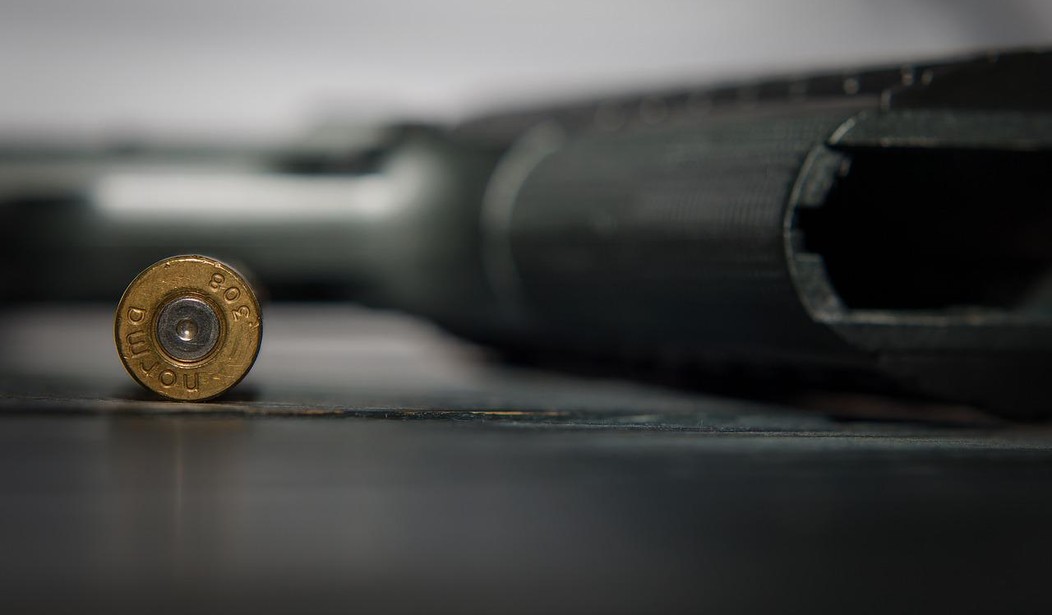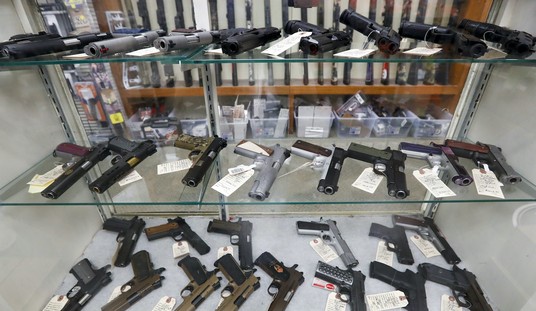Does the “right of the people to keep and bear arms” cover people who are in this country illegally? A three-judge panel on the Eleventh Circuit Court of Appeals said “no” on Monday, ruling against a man who had lived in the United States for almost two decades before he was deported after being convicted on one count of possession of a firearm by an illegal alien.
Ignacio Jimenez-Shilon appealed that conviction, arguing (as he had at trial) that the federal law in question was a violation of his Second Amendment rights. The panel of judges, however, agreed with the lower court that ruled those in this country illegally don’t have a right under U.S. law to either keep or bear arms.
Jimenez’s argument to us is straightforward: (1) Even as an illegal alien, he lived in the United States for decades and was thus among “the people” whom the Second Amendment protects; and (2) as a consequence, he couldn’t be punished for exercising his individual right to possess a firearm.
But the inquiry isn’t as mechanical as Jimenez suggests. As we will explain, being a member of “the people” to whom the Second Amendment applies as a general matter is a necessary condition to enjoyment of the right to keep and bear arms, but it is not alone sufficient. The reason is that the Second Amendment’s text shows that it codified what the Heller Court called a “pre-existing right,” 554 U.S. at 592, 603—the right “to keep and bear Arms”— and that right’s particular history demonstrates that it extended (and thus extends) to some categories of individuals, but not others. Accordingly, as the Supreme Court put it in Heller, certain groups of people—even those who might be among “the people”—may be “disqualified from” possessing arms without violating the Second Amendment.
Illegal aliens, according to the judges, are among those “certain groups of people” who can be disqualified, because both the law and historical precedent in this country have made it clear that “aliens could not surreptitiously enter a foreign nation in violation of the immigration prerogatives of the sovereign and expect to receive all the rights and protections of the citizenry. Nor can they do so today.”
In order to reach that decision the panel explored several Supreme Court precedents as well as some Founding-era history, which they say points to the idea that the right of the people to keep and bear arms was analogous to the rights of citizens to do so.
To take one example, the Federalist Papers explained that one of the bulwarks of personal liberty was the prospect of “citizens with arms in their hands.” The Federalist No. 46, at 296 (James Madison) (Clinton Rossiter ed., 1961).
“If the representatives of the people” were to “betray their constituents,” Hamilton proclaimed, then it would be the natural right of the “citizens” to “rush tumultuously to arms.” The Federalist No. 28, at 176 (Alexander Hamilton); see also, e.g., 3 Joseph Story, Commentaries on the Constitution of the United States § 1890, at 746 (1833) (“The right of the citizens to keep and bear arms has justly been considered, as the palladium of the liberties of a republic; since it offers a strong moral check against the usurpation and arbitrary power of rulers” and “enable[s] the people to resist and triumph over them.”).
Yet when the Constitution was submitted for ratification, many feared that the lack of an express guarantee of the right to bear arms would lead to an erosion of liberty—particularly because the new charter empowered Congress to call forth the militia and raise an army and navy. See Heller, 554 U.S. at 598.
Thus, several proposals quickly emerged in the States urging the adoption of an amendment explicitly prohibiting Congress from disarming “citizens.” See Charles, Armed in America, supra, at 94; The Complete Bill of Rights, supra, at 275 (documenting the Massachusetts proposal that Congress be barred from “prevent[ing] the people of the United States, who are peaceable citizens, from keeping their own arms,” as well as the New Hampshire proposal that “Congress shall never disarm any Citizen unless such as are or have been in Actual Rebellion”).
One of the most interesting aspects of this case was the concurring opinion authored by Judge Kevin Newsom, who was appointed to the Eleventh Circuit by Donald Trump in 2017. As UCLA law professor Eugene Voloch pointed out at Reason, Newsom took the opportunity to discuss the current use of “tiered scrutiny” to determine the constitutionality of laws dealing with the Second Amendment.
Judge Newsom also adds a separate concurrence, in which he questions the use of strict scrutiny, intermediate scrutiny, and similar tests both as to the Second Amendment and as to other constitutional rights, such as the First Amendment. Allowing constitutional rights to be overcome by compelling or substantial government interests, he argues, “elevates the normative views of ‘we the judges’ over ‘We the People’ through an ill-defined balancing test.” And, turning to the First Amendment, he adds:
It’s not just that the [First Amendment strict scrutiny / intermediate scrutiny] doctrine is exhausting—although it certainly is that. It’s that the doctrine is judge-empowering and, I fear, freedom-diluting. If we, as judges, conclude—as I’ve said we should—that Second Amendment rights shouldn’t be casually balanced away by reference to manipulable means-ends balancing tests, we might need to start asking the bigger question: On what basis can we do exactly that when dealing with other, equally fundamental rights?
There’s a lot of speculation among Supreme Court watchers that the upcoming decision in New York State Rifle & Pistol Association will specifically reject the current tiered-scrutiny approach adopted by lower courts in the wake of Heller in favor of a “text, history, and tradition” test that, in the words of attorney and scholar Joseph Greenlee, “focuses on the Second Amendment’s text, using history and tradition to inform its original meaning.” It sounds like Newsom thinks that a similar approach would be valuable for the First Amendment too, though it remains to be seen if SCOTUS will actually adopt that test for Second Amendment cases going forward.









Join the conversation as a VIP Member